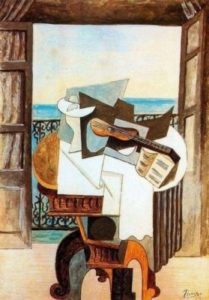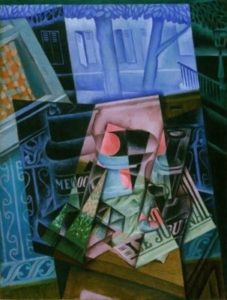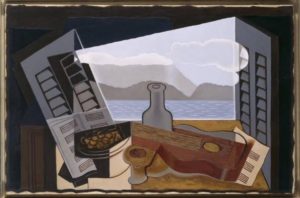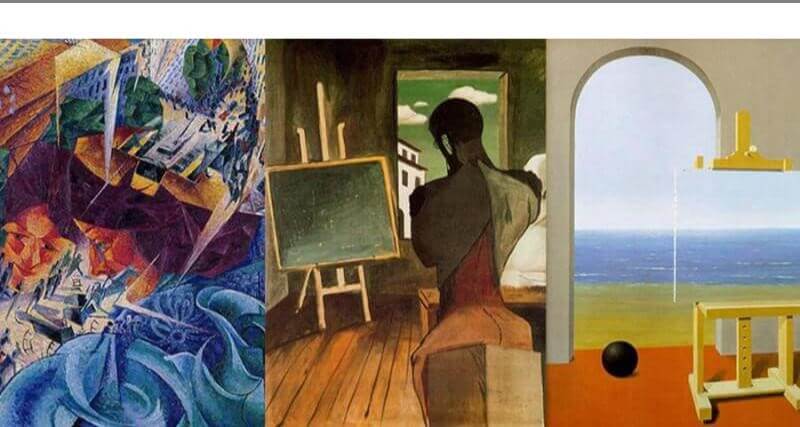The path of twentieth-century art is made up of stages that marked the progressive cancellation of the fundamental canons of traditional painting, which can be summarized in the principle of the verisimilitude of the image with respect to reality through perspective, plastic and color fidelity. From Impressionism onwards, the history of art has progressively renounced these principles, leading pictorial research to explore territories that, until then, seemed to lie outside the rules.
Expressionism had overturned those canons in the name of the need for the expression of the artist’s inner needs. Cubism takes to its extreme consequences the demolition of the fundamental principle of academic art: perspective. Already in the post-impressionist period, the one who deliberately deformed perspective was Paul Cezanne. The different parts that make up his paintings are almost all placed in a perspective relationship, but from different visual angles, demolishing what is the fundamental principle of perspective: the uniqueness of the point of view. Picasso, meditating on Cezanne’s lesson, takes the shift and multiplicity of points of view to the extreme consequences. In his paintings, the images are made up of fragments of reality, all seen from different angles, and assembled in a completely original simultaneous synthesis. In the traditional perspective, the choice of a single point of view required the painter to look only at some sides of reality. In Picasso’s paintings, the object is represented from a multiplicity of points of view, so as to obtain a “total” representation of the object.
WINDOWS WITH CUBIST STILL LIFE
This work by Picasso is part of a series of around twenty still lifes of similar composition executed by the artist between 1919 and 1920, during and following a stay with his first wife, the Russian dancer Olga Koklova, in Saint-Raphaël on the French Riviera

In these still lifes Picasso continues to explore the representation of the guéridon (the serving table at the table), usually placed in front of a window and paired with an assortment of objects among which the guitar is never missing. Still life, on the other hand, was the genre that best lent itself to cubist analysis of the structural principles of solid forms composed in a concrete and disciplined space.
Unlike the still lifes painted before 1919, rendered in closed environments, where the guéridon was placed against walls or curtains, in this series the theme of the window appears, an element that belongs to a long tradition of pictorial theory and which constitutes the metaphor of the painting itself
Notice how in this painting the elements remain recognisable; some of them, such as the window and the balcony railing, are depicted in a completely naturalistic way. In fact, in 1917, Picasso had been in Rome and this stay had determined the artist’s encounter with Italian Renaissance painting, which led him to that radical stylistic turning point of the “Classic Period”, following that of Analytical Cubism and Synthetic Cubism .
This series of tables, if examined as a whole, is indicative of this evolution in Picasso’s painting, where the elements of synthetic cubism (decomposition of reality, shown simultaneously from multiple points of view, importance of colors, simplification of compositions), they are combined with classicism, that is, with the revival of naturalistic-figurative elements and traditional themes.
The period following the First World War marked a great diffusion of Cubism and this was however the period in which its founders began searching for new forms of expression. Picasso does not abandon cubist experiments, but he no longer feels the urge to investigate the complex formal and spatial problems that worried him ten years earlier and feels free to wander elsewhere.
The list of artists who have worked on the theme of still lifes at the window would be too long.
Still in the cubist context, a painting by Juan Gris had been made a few years earlier.

In previous years (and also in subsequent ones) this is a motif on which Henri Matisse’s work moves several times. From Gauguin to De Chirico, from Masson to Guttuso, the still life/window combination has always allowed us to put together the instance of the landscape (which directs the gaze towards a vanishing point outside the painting) with that of the still life, which structure on completely different spatial forms.
Still life is a type of pictorial representation that consists of portraying inanimate objects: fruit, gold, fish and dead game, books and musical instruments, and objects of various types. The expression still life derives from the French nature morte, which appeared around the middle of the 18th century. Until that moment the pictorial genre in question was indicated with a term that meant ‘still, silent nature’: Stilleven (Dutch), Stilleben (German), Still-life (English).
These are expressions that imply a negative value judgment with respect to the ‘living nature’ of painting whose protagonist is man (history painting). From this point of view, its fate is analogous to that of landscape painting and genre scenes (which depict the daily life of ordinary people), which established themselves as autonomous fields in the seventeenth century and which academics relegated to the lower strata of the hierarchy of pictorial genres, at the top of which there is historical painting, which draws on sacred history, mythology, literature, and which therefore has man as its protagonist (not the common one, but the hero, the leader or the man of power) and his valiant, exemplary and public interest actions.
Many paintings are filled with inanimate objects, which however are not still lifes. To become one, the objects must be set up according to precise illusionistic-spatial rules. What immediately catches the eye in the spatial construction of the still life is the elimination of perspective devices, in particular the denial of depth. This happens both through the choice of the close-up point of view and through the elimination of the background as an infinite space. The still life, renouncing perspective depth, builds a system of “gaze” for the spectator that is less rigid and binding than the perspective one and allows him to place himself in space in a more elastic way.
Although examples of still life have followed one another from antiquity onwards, it emerged as an autonomous pictorial genre only in the 17th century. In addition to still life, in this century landscape and interior painting also emerged as autonomous genres. All three of these genres also follow very specific rules. Among these there are “spatial” representational expedients: the still life is connected to a surface on which the objects are arranged, for example a table, the landscape is often linked to a window, as a tool for creating depth, the interior view is related to a door.
These paintings that place still lifes in front of a window therefore represent a game between genres and the search for a relationship between two different organizations of space (the table and the window, the crushed frontality of the still life with the perspective depth of the landscape) , opposite to each other.


